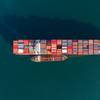TGS, Schlumberger reimaging central GOM
TGS-NOPEC Geophysical Company (TGS) and Schlumberger today announced a new multi- and wide-azimuth (M-WAZ) multiclient reimaging program in the highly prospective Central U.S. Gulf of Mexico. Final results are expected in early 2018, ahead of a period when substantial block turnover in the area is anticipated.
The new Fusion M-WAZ reimaging program comprises data covering more than 1,000 Outer Continental Shelf (OCS) blocks (~23,000 km2) from 3D WAZ programs previously acquired by TGS and Schlumberger with the WesternGeco Q-Marine* point-receiver marine seismic system between 2008 and 2012. This large reimaging program will process data from the Mississippi Canyon, Atwater Valley and Ewing Bank areas using the latest imaging technology to provide a significant uplift in data quality for upcoming licensing rounds. The area is expected to remain a high priority for E&P companies in the foreseeable future and will benefit from two licensing rounds every year for the next five years under the new BOEM 2017-2022 Five-Year Program.
“This highly prospective region is a core area for TGS and Schlumberger, where we have a close relationship with customers who continue to demand the best data to support their exploration and drilling activities,” said Kristian Johansen, CEO, TGS. “We have a strong track record of adding value to existing data sets through reprocessing with the latest technology. Fusion is the largest wide-azimuth reprocessing project ever performed by TGS in our collaboration with Schlumberger.”
Maurice Nessim, president, WesternGeco, Schlumberger, added, “This reimaging collaboration combines the use of the latest reimaging technology with high quality Q-Marine measurements and extensive geophysical and geological knowledge of this prolific area. Customers have shown great interest and we are confident that this project will afford them a competitive advantage in the upcoming lease rounds and ahead of the large block turnover.”
The custom-processing workflow for this project will include a number of newly developed imaging technologies including 3D WAZ de-ghosting; 3D surface related multiple elimination (SRME); common offset RTM gather (COR) and image-guided tomography; and orthorhombic anisotropy velocity modelling. During the reprocessing, geoscientists will update the salt interpretation and add input from the latest well data released for the area.
The reimaging program is supported by industry funding. Fast-track data will be available in 2017 for lease round bid evaluation.











